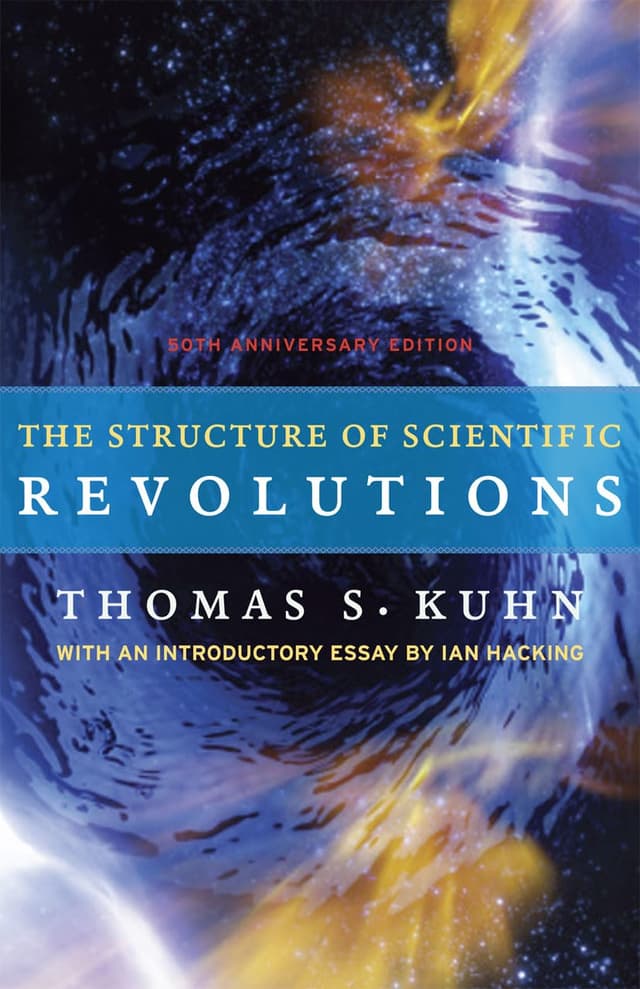Colin Nagy | November 14, 2021
The Executive Edition (11/14/21)
Recommended Products
Crossrope offers high-quality jump ropes and an application with interval workouts for an easy, portable workout.

Kuhn's book introduces the concept of scientific paradigms and explains how revolutionary changes shape our understanding of the world.

St Cecilia in Austin, Texas is highlighted as an all-time favorite hotel.
I was playing some tennis last week and asked the coach what he suggested for fitness. Instead of running or wind sprints, he suggested something I hadn’t really thought about: a trampoline (also called a rebounder). The next session, after concluding some drills, he trotted out a small circular rebounder and I did a few simple drills: wide stance for 15 seconds, rapid-fire steps close together, and then high knees for 15 seconds. We did several rounds of this and I was smoked. I always associated trampolines with childhood (and the attendant dangers of having one!) but always in a recreational sense. Turns out there is a large group of people that are obsessed with a particular style of bouncing fitness.
A Time article from 2016 sums it up:
A new study by the American Council on Exercise (ACE) finds that bouncing on a mini trampoline for less than 20 minutes is just as good for you as running, but feels better and is a lot more fun. The researchers gave a group of 24 fit college kids a mini trampoline and popped in a 19-minute trampoline exercise video. They measured the jumpers’ heart rates and oxygen expenditure every minute. Trampolining was found to be moderate-to-vigorous intensity exercise: with about the same physical effects as running six miles per hour, biking, or playing football, basketball, or ultimate Frisbee. Yet when people were asked to rate how exerted they felt, they gave scores more consistent with light-to-moderate intensity—suggesting that the workout felt easier than it should have.
In many ways, fitness has been getting more and more aggressive: Crossfit, intense HIIT classes, and the cult of things like Soulcycle and in the pandemic, Peloton. But it is interesting to me that something so simple could actually have a really productive outcome relative to the time expenditure. I haven’t pushed the button on buying one yet, but I will report back.
As a side note: for another easy, portable workout, I have been enjoying Crossrope. They made good quality jump ropes and have a good app that has interval workouts. Of course, you can keep it low-fi and just buy a decent rope and a stopwatch or watch the multitude of Youtube tutorials from people like the Jump Rope Guys. (CJN)
Department of Paradigms
I’ve written a few times about my fondness for Thomas Kuhn and his theory of paradigms. From The Paradigm Edition:
Kuhn said that revolutionary changes, like the one Newton brought, “involve discoveries that cannot be accommodated within the concepts in use before they were made.” He called these revolutionary changes paradigms in his 1968 book The Structure of Scientific Revolutions and explained that they fundamentally shape every aspect of how we think about the world. “Like the transition to Newton’s Laws of motion, they involved not only changes in Laws of nature but also changes in the criteria by which some terms in those laws attached to nature.”
It’s always interesting to read stories of real paradigm shifts. This Slate interview with Barry Marshall, who discovered that ulcers came from bacteria, not stress, is a perfect example. Here’s how Marshall describes the wisdom around ulcers at the time:
Peptic ulcers became more common in the 20th century, at the same time that these theories of Freud and other psychoanalysts became popular. And somehow those meshed, and this tradition emerged that ulcers were caused by stress or turmoil in one’s life. I don’t know where the data came from, but there was this idea that stress caused high acid levels; maybe there was a small amount of evidence for that, although I haven’t been able to find it when I’ve looked. Anyway, all those things added up to convince people that ulcers were caused by stress. There was no proper data of any kind. It was smoke and mirrors as much as anything else, but terribly convincing for everybody.
There was tons of pushback on Marshall, who even ingested some bacteria to prove it caused ulcers and they could be cured with antibiotics. Marshall eventually won the Nobel Prize in Medicine in 2005 for the “discovery of the bacterium Helicobacter pylori and its role in gastritis and peptic ulcer disease.” (NRB)
ICYMI
We had a good slate of WITIs this week. Check em out.
Hashem’s great MMD.
Gabe’s ode to the Habanada pepper.
A remembrance of BlackBerry’s BBM functionality.
The future of meat edition.
Rick Webb on Taylor Swift.
What Noah watched on Youtube this week:
Went down a skateboarding rabbit hole this week. It started with this video of Jonny Giger trying to do an insanely hard Rodney Mullen trick.
That got me thinking about Rodney Mullen and the story of the first kickflip.
Which brought me to this short documentary on Rodney Mullen.
Which obviously put me on Rodney vs Daewon round one, two, and three.
That dropped me off at this 50-minute Transworld doc on Daewon Song. Fun stuff. (I even got my little one to watch 20 minutes of skate videos with me.)
Come to think of it, I probably ended up with some of the skate recommendations because I watched a bunch of graffiti videos from Doke with my kids. Painting UNBELIEVABLE Halloween wall | Ft. Smoe, Painting my TALLEST Wall Ever! (with SPECIAL Tool), Painting a CUSTOM Basketball COURT!, and the most fun, Painting with RANDOM Colors (UNTIL they are EMPTY)
Finally, Fred Armisen Impersonates Each Decade of Punk Music.
Hotel of the day:
St Cecilia in Austin Texas. An all-time favorite. (CJN)
Odds and Ends:
More on the benefits of rebounding
The global streaming boom is creating a translator shortage (via Felix)
Illegal fishing the Gulf of Mexico (via Eric)
Friend of WITI Juno DeMelo in the NYTimes on John Sarno and his back pain philosophy
Remarks complete. Nothing follows.
-Colin and Noah
